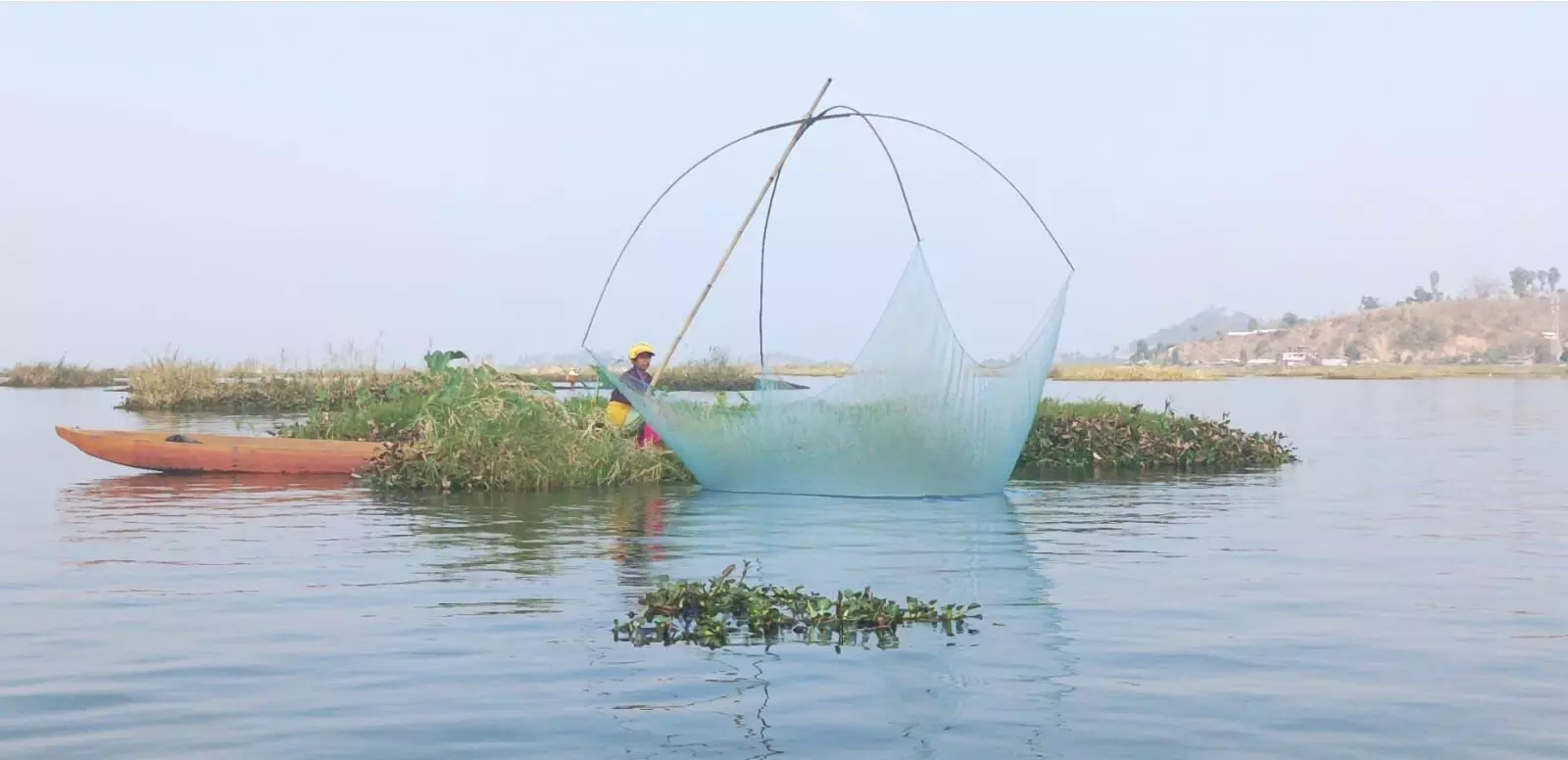
AT Photo
Bishnupur, Apr 1: The rate of fish catch in Manipur’s present day Loktak Lake, which was once the largest fishery resource of the state, has drastically declined, according to local fishers.
“Destruction of fish habitat,decrease in depth (lake), poor water quality, changing climate, indiscriminate fishing and other disturbance could be the reasons for the decline in catching fishes,” claims secretary Oinam Rajen of All Loktak Lake Areas Fishers Union Manipur (ALLAFUM) - an indigenous fishers union.
“Even the favourite food of some fishes such as Tangsang charang-a type of water weed has vanished from the lake as it was replaced by other water weeds -Khokpha charang and Kangsang charang and Yensam charang.”
Oinam Rajen was sharing his personal experience on the side line of a day-long workshop on conservation and management of Loktak ecosystem at the premises of People’s Resource Development Association at Bishnupur, 35 kms south of Imphal on Thursday.
Loktak Lake, which was once the largest fishery resource of the state with its fish producing area, accounts for merely 11% of the total state fish production, according to Atlas of Loktak Lake (2004).
Though there in no latest data on decline of the fish population at Loktak, Rajen, a fisher who lives and earns his livelihood from Loktak Lake, a Ramsar site housing the only floating wildlife preserve on earth, said the change in the natural system of the lake after the development of Ethai barrage and subsequent destruction of fish habitat in the lake, not only affect the fish population-the indigenous fish species such as Ngachou, Nganap, Ngasep, Ngaten, Meitei Ngamu, Ngaseksa, Pheetin, Ngakra, Ngarin also vanished from the lake.
On the other hand to avoid indiscriminate fishing during its breeding season and also to give a passage for migratory birds, ALLAFUM had even decided not to use LED bulbs and Injao Thaba, a local technique of night fishing from December 30,2022 till Thursday(March 30 this year) at the iconic Loktak Lake.
“However in view of the changing climate pattern in the lake and the issue of sustainability, we’re thinking not to continue the night fishing techniques in our areas for some time to allow the fish to grow into more mature fish,” he opined.
After all, fish is the main food of the majority of Manipuri population, particularly of the Meities and occupies a distinct place in their traditions and livelihoods. The annual requirement of table fish for the state is 56,000 MT but the state produces only 36,000 MT. As a result, the state spends more than Rs 300 crores on fish imports annually, according to official sources.
